A smaller waist refers to having a narrow circumference around the midsection, typically between the rib cage and the hips. Many cultures and fashion trends find a smaller waist to be a symbol of beauty, femininity, and an appealing body shape. This is often because a smaller waist can create an hourglass figure, however, beauty is subjective and personal experiences may vary.
There are many natural methods like diet and exercises for smaller waist. In some cases, individuals may seek other solutions to achieve their desired waistline. It’s important to take a balanced approach to combining both non-surgical and surgical solutions, such as:
- Tummy Tuck surgery, also known as abdominoplasty, can help address excess skin and fat in the abdominal area, resulting in a flatter and more contoured waistline.
- Post Pregnancy Procedures are a combination of procedures that typically involves a tummy tuck, breast lift or augmentation, and liposuction. It aims to restore a woman’s pre-pregnancy figure.
- Liposuction is a common surgical option that removes fat deposits from specific areas, including the waist.
While surgery for smaller waist can provide significant and immediate results, they require careful consideration. It is crucial to consult with a qualified and experienced plastic surgeon who can assess individual needs and recommend the most appropriate approach.
Understanding the Science Behind Waist Size
Waist size is influenced by a combination of factors, including genetics, and body composition. Understanding these factors is crucial in understanding the challenges of achieving a narrow waist.
Additionally, fat distribution significantly affects waist size. There are two common patterns:
- Android (apple-shaped) pattern tends to accumulate in the abdominal area, resulting in a larger waist. This fat pattern is commonly observed in men.
- Gynoid (pear-shaped) pattern involves fat accumulation in the hips, buttocks, and thighs, resulting in a smaller waist. This pattern is more typical in women.
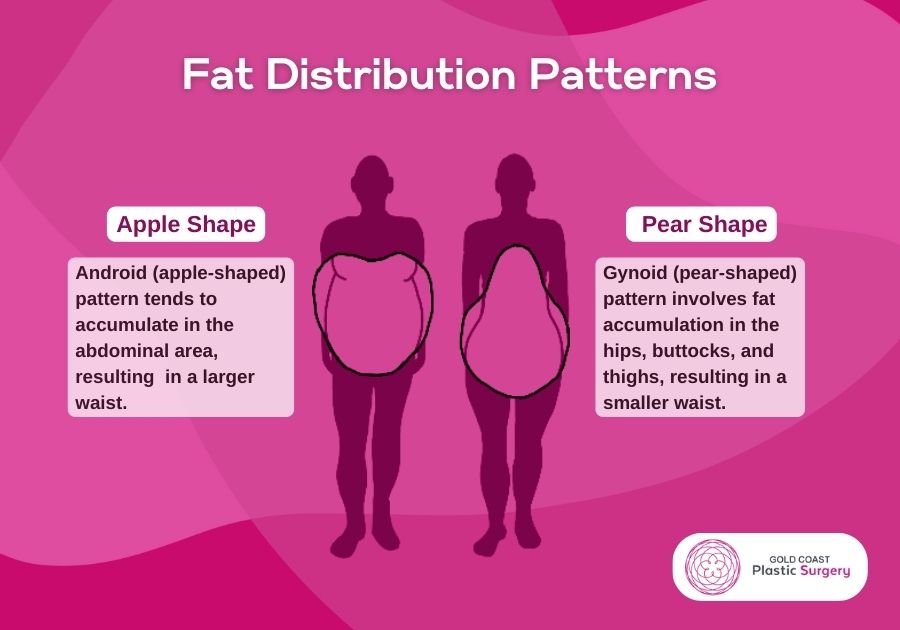
Waist size alone does not provide a complete picture of overall health or body composition. It is important to adopt a holistic approach that combines various strategies. This approach should include regular physical activity, cardio exercises and strength training, to reduce overall body fat and increase muscle tone.
A balanced and nutritious diet can aid in weight loss and body fat reduction, ultimately impacting waist size. Everyone’s body is unique, and the focus should be on a healthy lifestyle rather than an idealised body shape or skinny waist.
How to Measure Waist Size?
The ideal waist size measurement numbers are shown below. The numbers are based on the average for a healthy waist size which would not be considered at risk for heart disease by the Cleveland Clinic.
Ideal Waist Size Calculator

Factors Influencing Waist Size
Genetics
Genetic factors play a significant role in waist size. Our genes influence various aspects of our body composition, including where we store fat and how our body shape develops. Some people naturally have a more pronounced waistline, while others have a straighter or less defined waist.
Our genes can also influence the distribution of fat in our bodies. Certain genetics can lead to an accumulation of fat in the abdominal area, leading to a larger waist circumference. This is referred to as an android fat distribution pattern which is commonly observed in men but can also occur in women.
Some individuals that are genetic predisposition to have a slim waist may have a gynoid fat distribution pattern. In this pattern, fat tends to accumulate more in the hips, buttocks, and thighs, resulting in a relatively smaller waist circumference.
Body Composition
Higher body fat percentages are generally associated with larger waist circumferences. Fat cells can accumulate in the abdominal region, resulting in a thicker waistline. On the other hand, lower body fat percentages tend to correlate with smaller waists.
Muscle mass and overall body composition also play a role in waist size. Muscle is more dense than fat, so it takes up less space. Therefore, individuals with higher muscle mass tend to have smaller waists.
Different Types of Fat Distribution

Visceral fat and subcutaneous fat are two types of adipose tissue that differ in their location and potential health implications.
Subcutaneous Fat
Subcutaneous fat is located directly under the skin and can be pinched. This fat serves several functions, including insulation, energy storage, and cushioning. Excessive subcutaneous fat can contribute to an increase in overall body size and shape, however, it is generally considered to be less metabolically active compared to visceral fat.
Visceral Fat
Visceral fat, on the other hand, is located deep within the abdominal cavity and surrounds vital organs such as the liver, pancreas, and intestines. Unlike subcutaneous fat, visceral fat is metabolically active and can release certain substances into the bloodstream, including fatty acids and hormones.
Abdominal fat accumulation, particularly visceral fat accumulation, has been associated with an increased risk of various health problems, such as cardiovascular diseases, type 2 diabetes, metabolic syndrome and inflammatory conditions.
Maintaining a healthy lifestyle that includes regular physical activity, a balanced diet, and weight management is crucial for reducing both visceral and subcutaneous fat levels and minimising the associated health risks.
Does waist size affect health?
Waist circumference is widely recognised as a valuable indicator of abdominal obesity and is used as a screening tool to assess the risk of various health conditions.
Here are a few facts about waist size:
- Cardiologist Leslie Cho, MD states that the chances of developing serious health conditions like high blood pressure, diabetes, and heart disease increase with increased weight.
- Fat cells release hormones and other chemicals which can lead to inflammation. Inflammation is related to a higher chance of developing diseases such as heart disease, cancer, and diabetes.
- According to a study published in the Journal of the American Heart Association, waist size is a more accurate predictor of the risk of heart attack, compared to BMI.
Waist Circumference and Health Risks
Abdominal obesity is associated with a higher risk of developing several health conditions including:
- Cardiovascular diseases: High blood pressure, dyslipidemia, and insulin resistance can lead to the progression of atherosclerosis (hardening and narrowing of arteries) and increase the likelihood of heart disease, heart attacks, and strokes.
- Type 2 diabetes: The accumulation of visceral fat increases the risk of developing type 2 diabetes, a chronic condition characterized by high blood sugar levels.
- Metabolic syndrome: Having metabolic syndrome significantly raises the risk of cardiovascular diseases, type 2 diabetes, and other health complications.
- Chronic inflammation: Visceral fat, promotes chronic low-grade inflammation in the body. This is associated with an increased risk of various conditions, including certain cancers, fatty liver disease, and metabolic disorders.
The health risks associated with abdominal obesity are not solely determined by waist circumference but are also influenced by other factors such as genetics, overall body composition, lifestyle choices, and medical conditions. However, waist circumference serves as a practical screening tool for assessing abdominal obesity.
Regular monitoring of waist circumference, along with other health markers, can help individuals assess their risk profile and take proactive steps to manage their weight and consult with healthcare professionals when necessary.
Holistic Approaches to Achieve a Smaller Waist
Exercise and Fitness Regimen for a Trim Waist
Combining waist-targeting exercises with regular cardiovascular exercise, along with a balanced diet, can help you achieve a more trim waist while improving overall fitness and body composition.
Effective Waist-Slimming Exercises
Incorporating waist exercises into your fitness routine can help strengthen and tone the abdominal muscles, contributing to a smaller waistline. While spot reduction is not possible there are exercises to get a smaller waist by enhancing muscle definition and improving overall body composition. Here are some effective workouts for a smaller waist:
- Planks: Planks engage the entire core, including the muscles in the abdomen and back. Hold this position for as long as you can while maintaining proper form and engaging your core muscles.
- Bicycle Crunches: Bicycle crunches target the rectus abdominis and oblique muscles.
- Russian Twists: Reach side to side and engage your entire core muscles, you can hold onto weight to increase difficulty.
- Side Planks: Side planks target the oblique muscles. Hold this position while engaging your core.
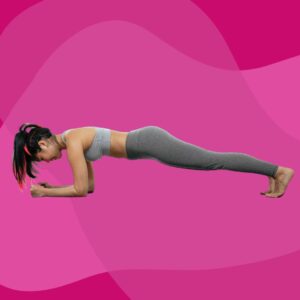
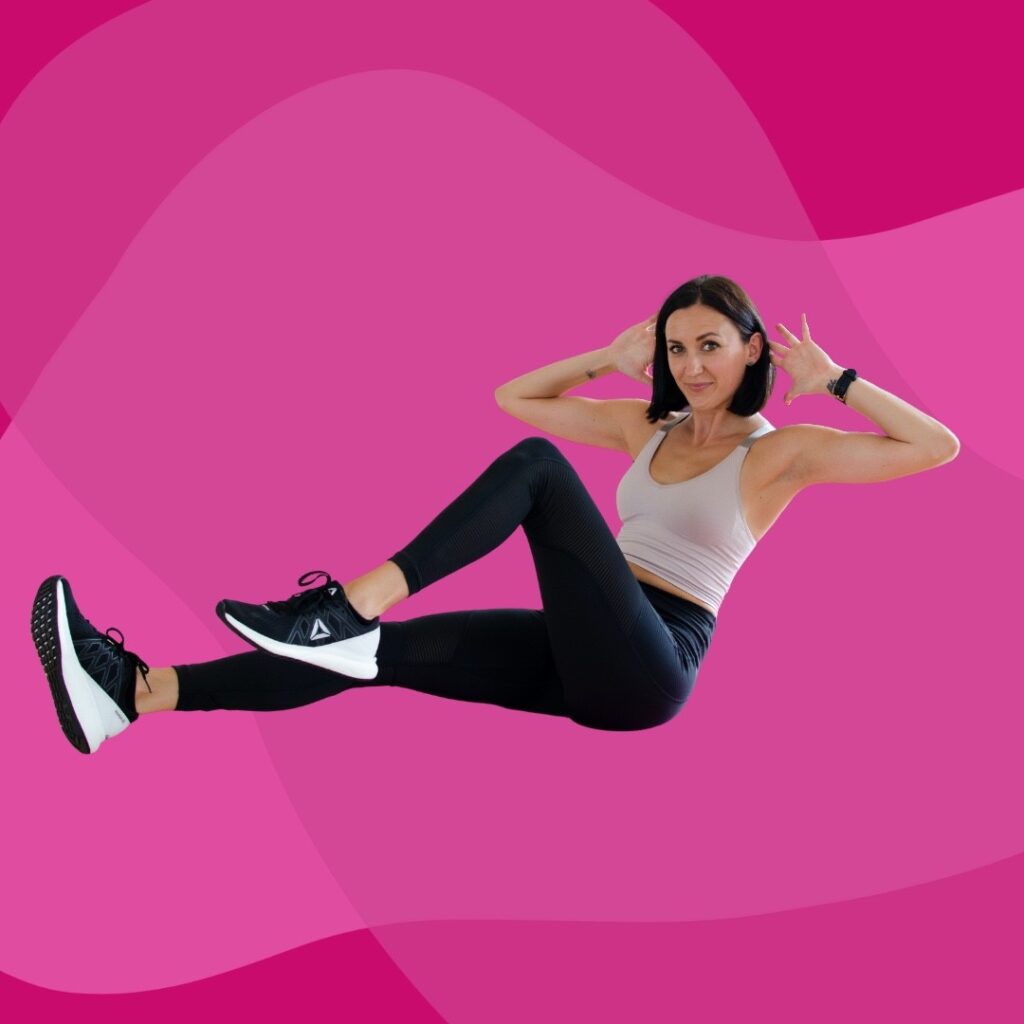
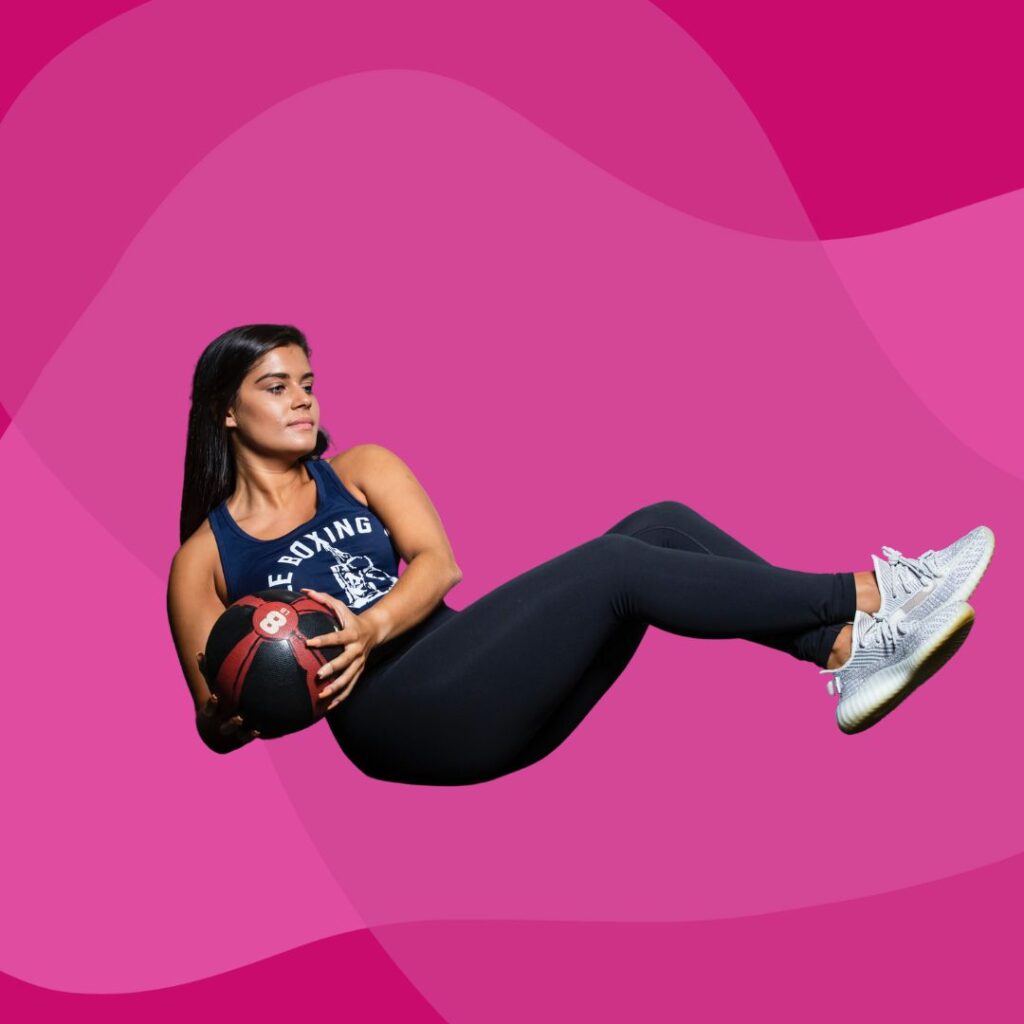

Remember to perform these exercises with proper form and gradually increase the intensity and duration as you build strength.
In addition to targeted core exercises, incorporating cardiovascular exercises into your routine is crucial for overall fat loss, including reducing waist circumference. Cardiovascular exercises elevate your heart rate, increase calorie burn, and promote fat loss throughout the body. Some effective cardio exercises include:
- Brisk Walking or Running
- Cycling
- HIIT (High-Intensity Interval Training)
- Dancing or Aerobic Classes

It’s crucial to choose cardio exercises that you enjoy and can sustain over time. Remember to gradually increase the intensity and duration of your cardio workouts to challenge your body and promote fat loss continually.
Targeted Waist-Toning Exercises
Here are a few slim waist workout exercises that target the obliques and transverse abdominis muscles:
- Side Plank Hip Dips: From the side plank position, lower your hips down towards the floor and then raise them back up. Repeat on the other side.
- Russian Twists with a Medicine Ball: Sit on the ground with your knees bent and feet lifted slightly off the floor, lean back slightly, maintaining a straight back and engaged core. Twist your torso from side to side, touching the medicine ball or weight to the ground on each side.
- Standing Side Bends: Stand with your feet shoulder-width apart and hold a dumbbell in one hand. Keeping your back straight and core engaged, bend directly to the side, focusing on contracting the oblique muscles. Return to the starting position and repeat on the other side.
- Bird Dog: Begin on all fours with your hands under your shoulders and your knees under your hips. Keeping your back straight and engaged, simultaneously extend your right arm forward and your left leg backwards. Hold for a moment, then return to the starting position. Repeat on the other side.
In addition to targeting specific abdominal muscles, it’s important to incorporate strength training into your routine. Strength training helps build lean muscle mass, which can increase metabolism and contribute to overall fat loss. Including compound exercises that engage multiple muscle groups simultaneously, such as squats, deadlifts, and overhead presses, can be highly beneficial.
Creating an Effective Waist-Trimming Workout Plan
Creating an effective waist-trimming workout plan requires a combination of cardio, strength training, and core exercises. This can help reduce a fat waist by decreasing the overall body fat. Below is a sample workout plan that incorporates these elements.
| Warm-up | 5-10 minute warm-up to increase blood flow and prepare your body for exercise. | Choose from light cardio activities such as jogging in place, jumping jacks, or dynamic stretches. |
| Cardiovascular Exercise | 30-45 minutes of moderate-intensity cardio exercises 4-7 days per week. | Choose activities that you enjoy and can sustain, such as brisk walking, jogging, cycling, swimming, or aerobic classes. Gradually increase the duration and intensity of your cardio workouts over time to challenge your body and promote fat loss. |
| Strength Training | Include 2-3 days of strength training exercises per week to build lean muscle mass and boost metabolism. | Focus on exercises that target multiple muscle groups, including squats, lunges, deadlifts, push-ups, rows, and overhead presses. Gradually increasing the weight or resistance as your strength improves. |
| Core Exercises | Dedicate at least two days a week to specifically target your core muscles. | Incorporate exercises that engage the rectus abdominis, obliques, and transverse abdominis. Examples include planks, bicycle crunches, Russian twists, side planks, and bird dogs. |
| Rest and Recovery | Allow for adequate rest and recovery between workout sessions. | Giving your muscles time to repair and regenerate is essential for progress and injury prevention. |
Consistency is key to achieving results. Aim to follow your workout plan consistently, following the recommended frequency and intensity of each exercise. Gradually progress by increasing the duration, intensity, or weight/resistance of your workouts over time. This gradual progression helps challenge your body and avoid plateaus.
It’s essential to consult with a healthcare professional or a certified fitness trainer before starting any new exercise program.
Dietary Adjustments for a Slim Waist
The role of nutrition is crucial when it comes to waist size and body fat distribution. Calorie intake plays a significant role in determining where fat is stored. When you consume excess calories, the body tends to store them as fat, and the distribution of this fat can vary from person to person.
When aiming for a thin waist, it’s important to be mindful of certain foods and drinks that may contribute to weight gain and a larger waistline. It’s best to avoid processed foods, sugary beverages, and alcohol.
To reduce waist size and reduce overall body fat, it’s important to maintain a balanced diet rich in whole foods. Here are some key factors to consider.
Diet Recommendations
- Whole Foods: Focus on consuming whole, minimally processed foods such as fruits, vegetables, whole grains, lean proteins, and healthy fats. These foods are generally lower in calories and higher in nutrients.
- Fibre: Include foods high in fibre, such as fruits, vegetables, whole grains, and legumes. Fibre helps keep you fuller for longer, reduces cravings, and aids in healthy digestion.
- Lean Protein: Incorporate lean protein sources like skinless poultry, fish, tofu, legumes, and low-fat dairy products. Protein helps support muscle development.
- Healthy Fats: Include sources of healthy fats like avocados, nuts, seeds, olive oil, and fatty fish. Healthy fats provide essential fatty acids, promote feeling full, and support overall health.
- Hydration and Water-Rich Foods: Stay hydrated by drinking plenty of water throughout the day. Additionally, include water dense foods like cucumbers, watermelon, and leafy greens.
Practice portion control to avoid overeating. Be mindful of your hunger and fullness cues and listen to your body. Eating slowly and savouring each bite can help prevent overeating.
Remember that individual nutritional needs may vary, and it’s beneficial to consult with a registered dietitian or healthcare professional to create a personalized nutrition plan tailored to your specific goals and requirements.
Surgical Options to Reduce Waist Size
Tummy Tuck (Abdominoplasty)


A tummy tuck, also known as abdominoplasty, is a surgical procedure that removes excess skin and fat from the abdominal area and tightens the underlying muscles. This is not a smaller waist surgery but can result in a flatter and more toned abdomen, which can create the illusion of a smaller waist.
While a tummy tuck can help improve the appearance of the waistline, it’s important to note that it is primarily intended for removing excess skin and fat (rather than reducing waist size). View more examples of Abdominoplasty Before and After Photos.
Post Pregnancy Procedures
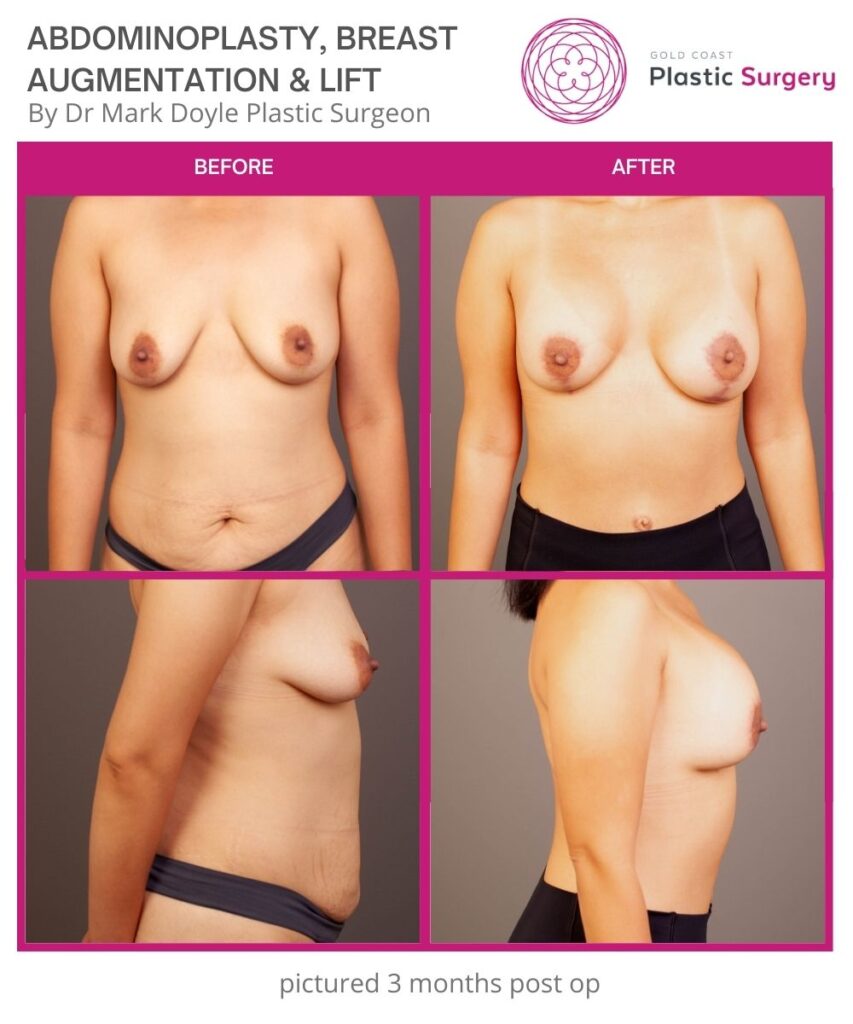
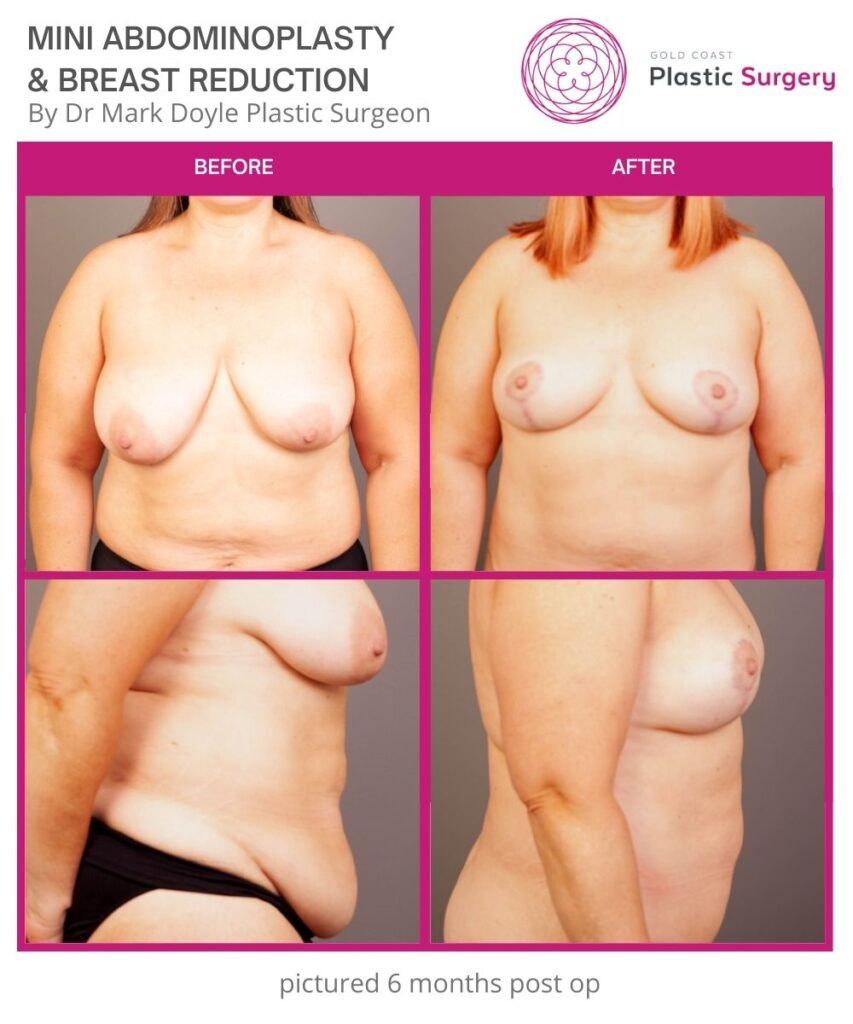
Post pregnancy surgery combines cosmetic procedures to help restore a woman’s pre-pregnancy body shape. Post pregnancy procedures can include procedures such as a tummy tuck, liposuction, and breast augmentation or lift.
During post pregnancy surgery, abdominoplasty is performed to remove excess skin and fat from the abdominal area and tighten the underlying muscles. Liposuction can also be used to remove stubborn pockets of fat in various areas, including the waist. These procedures can help contour the waistline and create a more sculpted appearance. View more examples of Post Pregnancy Procedure Photos.
Waist Liposuction

Waist liposuction removes excess fat deposits from the waist area to improve the contour and shape of the waistline. Liposuction involves using a cannula in small incisions in the skin. The cannula is used to suction out fat cells, reducing the volume and circumference of the waist. A liposuction waist will have immediate results after the fat is removed.
It’s important to note that waist liposuction is not a substitute for healthy lifestyle habits such as regular exercise and a balanced diet. It is best suited for individuals who have already made efforts to achieve a healthy weight but are struggling with stubborn fat deposits in the waist area.
As with any surgical procedure, it is crucial to consult with a qualified plastic surgeon who will evaluate your suitability, discuss your expectations, and provide guidance on the procedure, recovery process, and expected outcomes. They will be able to determine if a tummy tuck, post pregnancy procedures or liposuction is an option for you.
Experience the Expertise: Dr Doyle’s Recommendation
As with any procedure, safety should always be your highest priority, that’s why choosing the right practitioner is crucial. You need to ensure they are qualified and highly experienced. You should feel comfortable that they understand your goals and can achieve them.
Dr Mark Doyle enjoys a reputation as one of Australia’s best plastic surgeons. He is renowned for his exceptional surgical ability, artistic skills and caring bedside manner. Dr Mark Doyle is dedicated to helping his patients look and feel their best.
Dr Mark Doyle, Specialist Plastic Surgeon
- Fellow of the Royal Australian College of Surgeons – FRACS (Plas)
- 30+ years of cosmetic surgery experience
- 15,000+ hours in the operating theatre
- 10,000+ surgeries performed including 2,000+ body surgeries
- 200+ positive reviews
- Extensive expertise in surgical planning and 3D imaging
- Committed follow-up and 12 months aftercare including scar treatment
- Helped thousands of happy clients! See for yourself with these Abdominoplasty Before and Afters.
Maintaining a Smaller Waist in the Long Run
While surgical interventions such as waist liposuction can help lose waist fat and enhance the appearance of your waistline, it’s important to understand that maintaining a smaller waist, in the long run, requires a commitment to a healthy lifestyle. Consider maintaining a balanced diet, a regular exercise routine, and staying hydrated.
By combining surgical interventions with a healthy lifestyle, you can maximise the results of the procedure and ensure their longevity. Consult with a healthcare professional who can provide personalised guidance tailored to your specific needs and goals. Remember, a holistic approach is key to achieving lasting results.
Best Practices for Smaller Waist
When aiming for a smaller waist, it’s important to adopt a holistic approach that incorporates various practices into your daily routine. Here are some best practices to consider.
Get Enough Sleep
Aim for 7-9 hours of quality sleep each night. Sufficient sleep supports overall health and can aid in weight management by regulating hunger hormones and reducing cravings.
Manage Stress Levels
Chronic stress can contribute to weight gain, including excess abdominal fat. Find stress management techniques that work for you, such as practising mindfulness, engaging in hobbies, or seeking support from loved ones.
Avoid Sedentary Behavior
Minimise prolonged periods of sitting or inactivity, as this can contribute to weight gain and weaken core muscles. Take breaks to stand up, stretch, and move around throughout the day.
Incorporate More Movement
Look for opportunities to incorporate physical activity into your daily routine. Take the stairs instead of the elevator, walk or bike to nearby destinations, or participate in activities you enjoy, such as dancing, swimming, or yoga.
Practice Waist-Targeting Exercises
Include exercises that target the waist area to help tone and strengthen the muscles. Examples include side planks, Russian twists, bicycle crunches, and oblique twists.
Maintain Good Posture
Pay attention to your posture throughout the day. Standing and sitting tall with proper alignment can help engage and strengthen the core muscles, contributing to a more defined waistline.
FAQs
Can Doing Only Ab Exercises Help Me Achieve a Smaller Waist?
While ab exercises can strengthen and tone the abdominal muscles, they alone cannot reduce waist size. To achieve a smaller waist, it’s essential to focus on overall body fat reduction through a combination of cardio exercises, strength training, and a balanced diet.
Does Having a C-Section Automatically Lead to a Larger Waist?
No, having a C-section does not automatically result in a larger waist or “pouch.” The appearance of a “C-Section Pouch” is primarily influenced by factors like genetics, overall body composition, and lifestyle habits.
Can Diastasis Recti Affect My Ability to Achieve a Smaller Waist?
Diastasis recti, a condition of abdominal separation, can indeed have an impact on your ability to achieve a smaller waist. This condition can lead to a noticeable bulging abdomen, making it challenging to achieve the desired waist reduction.
Fortunately, there are strategies that can help address diastasis recti and improve the appearance of your waistline. Targeted exercises, specifically designed to strengthen the core muscles, can help close the abdominal gap and provide support to the abdominal area.
Consulting with healthcare professionals, such as a physical therapist, a certified postnatal fitness specialist, or a knowledgeable fitness trainer, can provide you with personalised advice tailored to your needs.
Contact Us
If you’re interested in exploring surgical options please reach out to Dr Mark Doyle. He can provide you with comprehensive information, personalised recommendations, and answer any questions you may have.
About Dr Mark Doyle FRACS (Plast) – Queensland Plastic Surgeon
Servicing patients in Gold Coast, Brisbane, Sunshine Coast, Cairns and New South Wales NSW – Northern Rivers, Byron Bay, Ballina, Lismore and more.
Dr Mark Doyle is a Specialist Plastic Surgeon with over thirty years of experience performing Breast, Body, Face and Nose surgery. Dr Doyle is a fully qualified Specialist Plastic Surgeon with 30+ years of experience. He has completed all required training and only carries out approved surgical practices. There are absolutely NO undertrained doctors or cosmetic doctors acting as surgeons in our clinic.
As a highly esteemed plastic surgeon, Dr Mark is committed to achieving the best possible results for all his breast, body, face and nose patients, both men and women.

